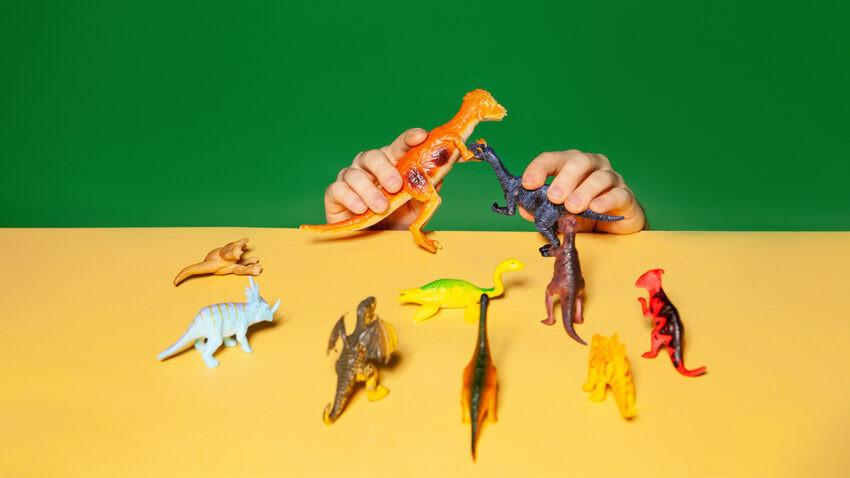Why Employee Mediations Fail — and How to Get Them Back on Track
Curated from: hbr.org
Ideas, facts & insights covering these topics:
14 ideas
·474 reads
4
Explore the World's Best Ideas
Join today and uncover 100+ curated journeys from 50+ topics. Unlock access to our mobile app with extensive features.
The Mediator
Many managers are aware of the upsides of mediating conflict between employees. But mediation can break down, and the authors’ research explains four reasons why that may happen. Being aware of these potential tripwires allows managers to watch out for them and devise strategies to navigate each.
There are four roles — beyond the standard mediator role — that managers can assume to limit the potential damage of a dispute and get it back on track.
11
67 reads
Four Reasons Mediation Fail: 1. High Intensity
The higher the intensity of a conflict, the more likely it is for mediation to collapse because the odds of one of the disputants storming out or freaking out and further damaging the relationship goes up. In our scenario above, the fact that the project is high stakes and the department heads have never gotten along are factors that notch up the tension levels.
11
67 reads
2. Competitive Relationships
Conflicts that occur between people or groups who are solely competing against one another, especially over coveted resources, are also prone to fail in mediation.
For example, perhaps those two department heads are fighting over sparse funding allocations or even the attention and recognition rarely doled out by higher-ups.
11
51 reads
3. Limiting conditions
Efforts that are greatly constrained by time, law, norms, or other factors are also prone to flop. To suggest that two employees can work out their issues in a single, two-hour meeting might be wrong.
Working things out takes as long as it takes, and mediation doesn’t always respond to the parameters that organizations draw.
11
41 reads
4. Unspoken Issues and Hidden Agendas
Problems can’t be resolved in open dialogue if important issues are kept hidden. For example, perhaps there are tensions around gender equity in the office, and the department heads in this scenario are of different genders. Mediations that involve issues that organizations aren’t talking openly about tend to fail.
11
50 reads
Avoiding The Four Tripwires
The standard mediator’s role is ideally to open dialogue and then disappear, allowing the parties to reach their own resolutions. Once the mediation is underway, you want to offer a relational, non-judgmental approach by asking questions, reflecting on the answers, and reframing what’s being said to help the parties expand their viewpoints.
But to do so, business leaders need to learn to navigate the four tripwires.
11
39 reads
The First Task: Be A Medic
A mediator’s first task is to gauge and control the intensity of a conflict. For those highly volatile ones, it’s important to play the role of medic by triaging the conflict to reduce its intensity. A mediator in medic mode is active — they remain highly present throughout the process and enforce communication guidelines like keeping people from going on the attack. This does not necessarily require an overly firm intervention; instead, the medic strikes a deft balance between allowing the parties to vent while slowing them down long enough that they begin to talk.
11
28 reads
The Tools Of The Medic
The medic’s best tools are controlling the process, managing emotions, and providing a structure that finally lets the parties involved hash it out, in a reasonable amount of time. Simultaneously, it’s up to the medic to model a positive example of self-composure and self-expression, and to reassure those involved, all while consistently evaluating and reframing their problems. The medic’s authority as an executive helps. A strong presence controls the room, and that control leads to better outcomes.
12
26 reads
The Second Task Of A Mediator: Being A Referee
The next task for the mediator is to assess whether the dispute is primarily a win-lose competition. If so, you need to be prepared to support firm and fair negotiations between them. The referee models how to effectively bargain and horse trade and efficiently settles outcomes. The referee also gives guidance and direction and makes the rules of the process crystal clear.
11
22 reads
What A Referee Does
The referee carefully evaluates the fairness and viability of both sides’ proposals.
The problem may also require facilitating compromise and trade-offs or finding ways to expand the pie to move the parties out of a win-lose mentality. There may be more common ground than you think.
For instance, in the hypothetical example above, it may be that the budget allocated to the project isn’t sufficient for either of the department heads to get their jobs done. That shared perspective can help align them toward working on a resolution together.
11
16 reads
The Third Task: The Fixer
Another critical task is to identify any major constraints on the mediation. Here the fixer makes an assessment with the goal of pushing restrictive situations toward new possibilities. Are there external constraints like bad timing (a pressing deadline makes it impossible to think), lack of privacy, restrictive HR procedures, or others that are keeping the parties from working things out?
If so, look at what you can do to lessen those constraints; ideally, you do this before bringing the disputants together.
11
19 reads
What The Fixer Does
The fixer can address tight constraints by calling them out and if necessary, discussing and solving them with the involved parties to make the necessary accommodations. This can trigger a more cooperative dynamic. The fixer can also leverage certain constraints to begin to lower the aspirations of anyone who’s completely stuck in their position or is there only to prevail. For instance, if the financial costs of a stalled project are escalating due to the dispute, the fixer might play to the budget concerns of the disputants to get them to budge off their position.
11
16 reads
The Tough Part: Counselling
Now for the tough part — to carefully surface unexpressed concerns or hidden agendas. This is where the counselor's role comes in. It’s best to speak privately with each party to unearth those covert issues. The counsellor is a neutral coach who makes all parties feel safe, heard, and understood. The private caucus is a sacred space created by the mediator for the benefit and comfort of the parties. The counsellor must set the tone to show their employees, “Here is a safe space where we can get work done.”
11
16 reads
What A Counsellor Does
The counsellor’s tools are listening, coaching, questioning, clarifying, and probing the history of the dispute, all while taking their time.
This approach often gets frustrated parties to open up about sensitive issues like workplace inequity, such as concerns about wages, access to promotions, advancement opportunities, and unequal distribution of work. It’s often in these more open, candid conversations that managers get a more accurate sense of the challenges some employees face.
11
16 reads
IDEAS CURATED BY
George 's ideas are part of this journey:
Learn more about leadershipandmanagement with this collection
Conducting effective interviews
Identifying the right candidates for the job
Creating a positive candidate experience
Related collections
Similar ideas
3 ideas
9 ideas
Conflict Resolution Strategies & Techniques for the Workplace
positivepsychology.com
2 ideas
Read & Learn
20x Faster
without
deepstash
with
deepstash
with
deepstash
Personalized microlearning
—
100+ Learning Journeys
—
Access to 200,000+ ideas
—
Access to the mobile app
—
Unlimited idea saving
—
—
Unlimited history
—
—
Unlimited listening to ideas
—
—
Downloading & offline access
—
—
Supercharge your mind with one idea per day
Enter your email and spend 1 minute every day to learn something new.
I agree to receive email updates














